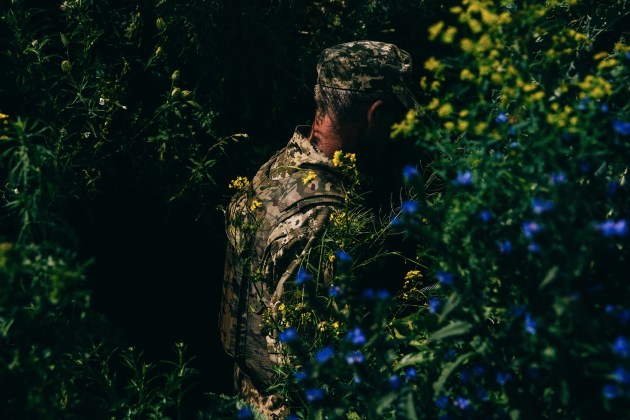World Press Photo announces winners for 2024
Mohammed Salem, a Palestinian Reuters photographer, has won the prestigious World Press Photo for 2024, the highest honour in photojournalism.

His image, A Palestinian Woman Embraces the Body of Her Niece, shows Inas Abu Maamar (36) cradling the body of her niece Saly (5) who was killed, along with her mother and sister, when an Israeli missile struck their home, in Khan Younis, Gaza.
Salem was in Khan Younis in the southern Gaza Strip on Oct. 17 at the Nasser Hospital morgue, where residents were going to search for missing relatives.
He saw the woman squatting on the ground in the morgue, sobbing and tightly embracing the child’s body.
The photographer describes this photo, taken just days after his own wife gave birth, as a “powerful and sad moment that sums up the broader sense of what was happening in the Gaza Strip”.
“People were confused, running from one place to another, anxious to know the fate of their loved ones, and this woman caught my eye as she was holding the body of the little girl and refused to let go.”
Inas Abu Maamar said she had raced to the house of her uncle when she had heard that it had been hit, and then on to the morgue.
“I lost my conscience when I saw the girl, I took her in my arms,” she said. “The doctor asked me to let go... but I told them to leave her with me.”
The World Press Photo jury commented on how the image was composed with care and respect, offering at once a metaphorical and literal glimpse into unimaginable loss.
The World Press Photo story of the Year was awarded to Lee-Ann Olwage, South Africa, for GEO, for her series Valim-babena.

In Madagascar, lack of public awareness surrounding dementia means that people displaying symptoms of memory loss are often stigmatized.
The jury commented: “This story tackles a universal health issue through the lens of family and care. The selection of images are composed with warmth and tenderness reminding viewers of the love and closeness necessary in a time of war and aggression worldwide.”
This story is part of a longer term body of work by Olwage about dementia.
The World Press Photo long-term project award went to Venezuela's Alejandro Cegarra, for his series The Two Walls.

Since 2019, Mexico's immigration policies have undergone a significant shift, transforming from a nation historically open to migrants and asylum seekers at its southern border to a country that enforces stringent immigration policies.
Drawing from his own first-hand experience of migrating from his native Venezuela to Mexico in 2017, photographer Alejandro Cegarra initiated this project in 2018. The jury felt that this photographer's own position as a migrant afforded a sensitive human centered perspective that centers the agency and resilience of migrants.
And finally, the Open Format award went to Julia Kochetova, Ukraine for her series War Is Personal.

Amidst tens of thousands of civilian and military casualties and an effective stalemate that has lasted for months, there are no signs of peace on the horizon for Russia’s war in Ukraine.
While news media updates its audience with statistics and maps, and international attention drifts elsewhere, the photographer has created a website that brings together photojournalism with the personal documentary style of a diary to show the world what it is like to live with war as an everyday reality.
This project weaves together photographic images with poetry, audio clips, and music in collaboration with a Ukrainian illustrator and DJ.
The awarded photographs were selected from 61,062 entries by 3,851 photographers from 130 countries. They were judged first by six regional juries, and the winners were then chosen by a global jury consisting of the regional jury chairs plus the global jury chair.
The global winners are selected from the 24 regional winners, which you can see here.
